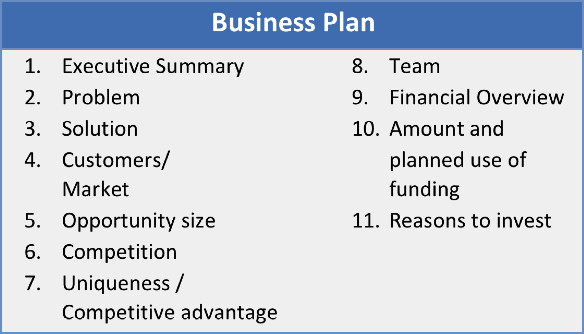Prose by any other name would read as sweet.
If you can skip writing out your business plan, then by all means feel free to skip this step. In some circles, a presentation and financial plan together are sufficient for investors. However, for many angel investors, banks, and many others, a written business plan is expected and required. A length of ten to twenty pages is typical, including an executive summary of two to five pages.
The outline of the plan closely follows the investor pitch. In fact, some people write out the plan first then summarize it into the pitch, while others start with the investor pitch and write out the script of the presentation as the text of the business plan. There is no one best way.
The key difference between the investor pitch and business plan is that you will not be present when the business plan is read. You will not have a chance to answer the Q&A in person. Instead, you need to include answers to the most common questions in the plan, leaving less up to the imagination of the reader.
The level of detail in the written plan can vary widely. I’ve seen written plans that are little more than the script from the investor pitch, five or six pages in length, and I’ve seen seventy-page written plans that include ten pages each on marketing, sales, and operations. When I’m sent a seventy-page plan, I applaud the entrepreneur for spending the time thinking through that level of detail but then ask for a five to ten page summary with the highlights. Anything longer than twenty pages should be kept internal to the team, used as an operations plan and to answer questions by investors.
In every case, the best written plans are those that clearly and succinctly explain the business. The key is to explain, as briefly as possible, why your startup exists, what it does, how it makes money, what it needs, and why I should help.
A few other tips:
Make sure it is understandable. Remember that your audience does not know your business anywhere near as well as you do, and that when they read your plan, you will not be in the room to answer questions. Have others on your team review the text, and ideally, have others not on your team review it, giving you feedback on which words and phrases need to be more clearly explained.
Include diagrams. One good diagram can often replace a page or two of text. For tech startups, include screenshots. For product companies, include pictures of the actual product or renderings of the prototype design.
Clearly label the sections, as your plan will more likely be skimmed than read in detail.
Make it look professional. Find a design template or hire a designer to make your plan look good.












